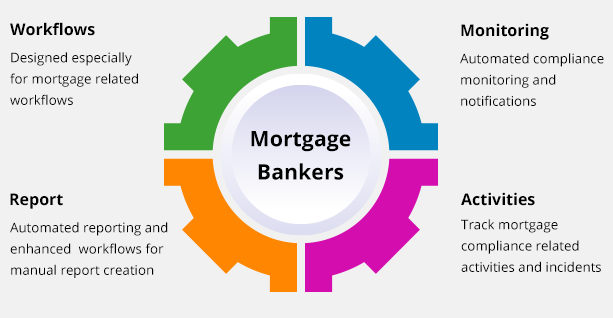At its core, risk management is the process of identifying, analyzing, and mitigating potential threats that could negatively impact financial outcomes. In the mortgage industry, this involves managing risks associated with:
- Lending money to potentially defaulting borrowers
- Fluctuating interest rates and housing market values
- Regulatory compliance and legal liabilities
- Economic downturns, job losses, or natural disasters
The mortgage industry deals with long-term, high-value financial commitments, often backed by collateral (homes). A small misstep in evaluating a borrower or misjudging the market can lead to:
- Loan defaults
- Foreclosures
- Massive financial losses
- Regulatory penalties
Proper risk management helps protect both lenders and borrowers, ensures financial stability, and prevents systemic issues—like those seen in the 2008 housing crisis.
Here are the key categories of risk that professionals in the mortgage industry must manage:
The risk that a borrower won’t repay the loan. Credit scores, income history, and debt-to-income ratios are all part of assessing this risk.
When market interest rates rise after issuing a loan, the lender earns less than current market rates. This is a common issue for long-term fixed-rate mortgages.
Risks due to internal failures such as technology breakdowns, human errors, or fraud during the loan processing cycle.
This arises from changes in the real estate market, including falling home prices, which can affect collateral value.
Lenders must adhere to U.S. regulations like Dodd-Frank, TRID, and Fair Lending Laws. Non-compliance can lead to fines or lawsuits.
Mortgage institutions and lenders apply various strategies to minimize risk:
- Thorough underwriting using credit analysis and property appraisals
- Risk-based pricing (higher rates for riskier borrowers)
- Mortgage insurance for high-LTV loans (like FHA-backed loans)
- Diversifying loan portfolios to reduce concentration risk
- Stress testing loan books under different economic scenarios
- Using automated risk engines powered by AI and data analytics
Risk management affects borrowers too! It determines:
- Your loan eligibility
- Your interest rate
- How much down payment you’ll need
- Whether your loan requires insurance
Understanding how lenders assess risk helps you prepare better applications and secure more favorable loan terms.
With advancements in machine learning, predictive analytics, and climate risk modeling, risk management in the mortgage industry is becoming more precise and proactive. It’s not just about protecting lenders anymore—it’s about creating a safer, smarter lending environment for everyone involved.
Risk management in the mortgage industry is the foundation of responsible lending. It ensures that financial institutions remain stable and that borrowers receive loans they can realistically repay. As the U.S. mortgage landscape evolves, expect risk management practices to become even more integral to how loans are approved, priced, and monitored.
🔗 Stay tuned to LoanAndMortgage.us for more insights on how to navigate the world of mortgages, lending, and financial security in the U.S.!

